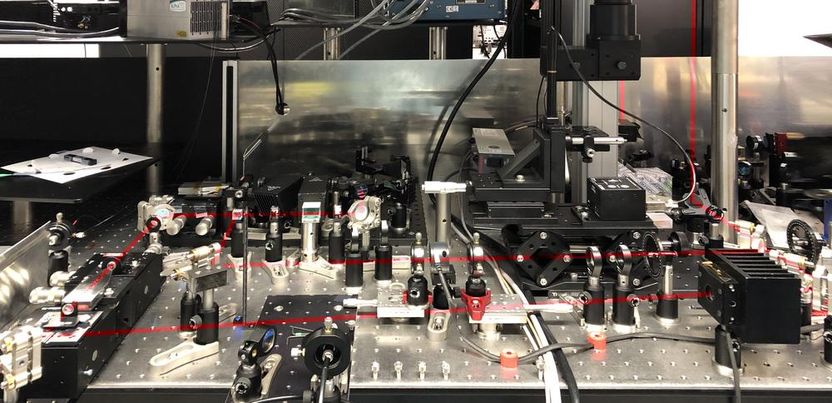Novel development for pH measurement
Innovation in sensor technology opens up new possibilities for more precise, more efficient data acquisition in the field of chemical analysis
Fraunhofer Institute for Photonic Microsystems IPMS announces a significant advance in chemical and biochemical analysis. The team led by Dr. Olaf R. Hild, Head of the Chemical Sensor Technology Business Unit, has successfully developed a pioneering sensing layer for chip-based pH measurement has and successfully integrated it into an ion-sensitive field-effect transistor (ISFET).

ISFET sensor chip from Fraunhofer IPMS.
© Fraunhofer IPMS
The pH of a solution is the most important parameter in chemical and biochemical analysis. An ISFET with a novel sensor layer developed by Fraunhofer IPMS, in combination with a conventional reference electrode, enables highly precise pH measurement in the range from pH 1 to pH 13. The compact, unbreakable sensor chip with dimensions of 5 x 5 mm² is characterized by a minimal drift of < 20 µV/h as well as low hysteresis while being easy to integrate. A significant improvement has also been achieved in the reduction of light sensitivity.
The dry storage capability of the sensor is one of its primary advantages. Moreover, the electrical operating point of the sensor can be flexibly adjusted via the design and the operating parameters, whereby an operating voltage (VDS) of below 1V is possible.
Dr. Hild, head of the research team, expressed his enthusiasm for the measurement data achieved by the mechanically robust sensor: "With these properties, the new ISFET is particularly suitable for on-site environmental analysis." Dr. Hild went on to emphasize that the next important research goal is to develop a sensor layer that enables a purely chip-based pH measurement that eliminates the need for conventional reference electrodes. This breakthrough technology would then have the potential to continuously collect environmental data over long time periods without the need for intervention by operating personnel.
Physical principles of the ISFET from Fraunhofer IPMS
The novel ISFET from Fraunhofer IPMS is based on metal-oxide-semiconductor (MOS) field-effect transistor technology, whereby the sensor area in contact with the medium consists of an amphoteric metal oxide layer. Hydronium or hydroxide ions from the medium are reversibly adsorbed on this sensing layer, allowing for the pH of the medium to be measured. The gate-to-source voltage (VGS) response versus a reference electrode (Ag/AgCl in 3 M KCl) is then used as the measurement signal.
Some of the research results were achieved in the "REISen" project, a project from the Department of Materials Science, which was co-financed from tax funds on the basis of the budget approved by the Saxon state parliament.
The developments of Fraunhofer IPMS contribute significantly to the further development of environmental analysis and open up new possibilities for more precise and more efficient data acquisition in the field of chemical analysis.
Most read news
Topics
Organizations
Other news from the department science

Get the analytics and lab tech industry in your inbox
By submitting this form you agree that LUMITOS AG will send you the newsletter(s) selected above by email. Your data will not be passed on to third parties. Your data will be stored and processed in accordance with our data protection regulations. LUMITOS may contact you by email for the purpose of advertising or market and opinion surveys. You can revoke your consent at any time without giving reasons to LUMITOS AG, Ernst-Augustin-Str. 2, 12489 Berlin, Germany or by e-mail at revoke@lumitos.com with effect for the future. In addition, each email contains a link to unsubscribe from the corresponding newsletter.

























































